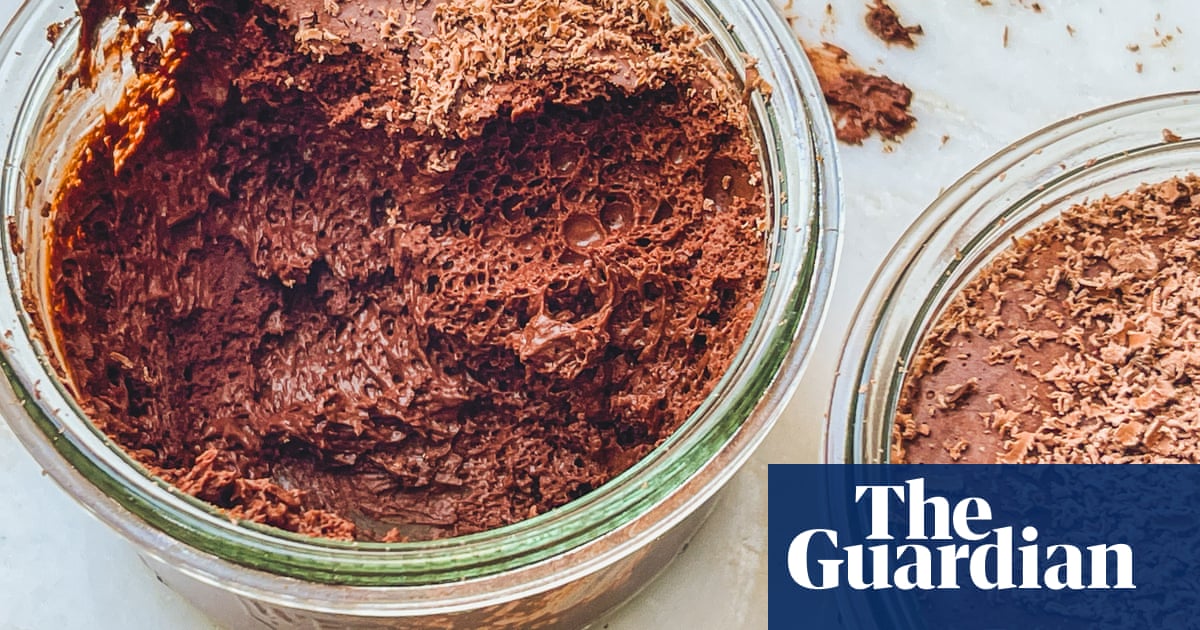Ilove the simplicity of today’s dish. Just two ingredients – chocolate and aquafaba – come together to create a waste-saving treat. Bean water has a mild savoury taste, but the dominant flavour here is chocolate, which, without the addition of extra fat (usually in the form of cream), becomes incredibly intense, amplifying its sheer chocolatiness.
Aquafabahas magical properties that mean it behaves like egg whites when whisked, creating an airy foam that can be used for everything from mayonnaise to mousse. According to Ada McVean in an article askingWhat is Aquafaba?for McGill University in Montreal, the water-soluble proteins and sugars in the beans leak into the water during cooking, giving it a similar composition to egg whites; it also contain saponins, which help it foam so well.
The other week, I was on a panel about the magic of food, and one of the first questions we were asked was how to balance taste, health and convenience, to assist people to cook healthily and diversify their diets. Well, this dish is a perfect example: it’s not only healthy, but it is also incredibly delicious, fun and easy to make. Dark chocolate is low in sugar and rich in minerals such as iron, magnesium and zinc, and has been linked to various health benefits, including reducing the risk of heart disease.
Personally, I enjoy a row of super-dark chocolate every afternoon as a little pick-me-up, and it always makes me smile to think that it’s good for me.Chocolatemelts at body temperature, which is possibly one reason it feels so satisfying on the tongue. However, it is also heat-sensitive: if it is overheated, it will split and turn oily, so always melt chocolate gently, ideally in a heatproof bowl set over a larger pot of hot but not boiling water.
120g aquafaba(ie, from a 400g can of chickpeas)¼ tsp cream of tartar or1 tsp lemon juice(optional, and only if the aquafaba is struggling to form firm peaks)100g dark chocolate, plus a little extra for grating on top
In a clean, grease-free bowl, use an electric whisk to beat the aquafaba to stiff peaks, then keep whisking for at least five more minutes, to ensure the aquafaba is firmly set (unlike egg whites, it is hard to over-whisk). If the aquafaba struggles to form stiff peaks, add the cream of tartar or lemon juice, although that shouldn’t be necessary.
Gently melt the chocolate in a heatproof bowl set over a pot of hot but not boiling water, stirring occasionally until smooth. Take off the heat and leave to cool slightly – this prevents it seizing up when mixed with the whipped aquafaba. Gently fold a third of the whipped aquafaba into the chocolate to loosen it, then carefully fold in the rest, keeping as much air in the mix as possible.
Spoon into four small serving glasses or ramekins and chill for at least eight hours, or overnight. Before serving, top with grated chocolate, if you like. The mousse will keep in the fridge for three to five days.
